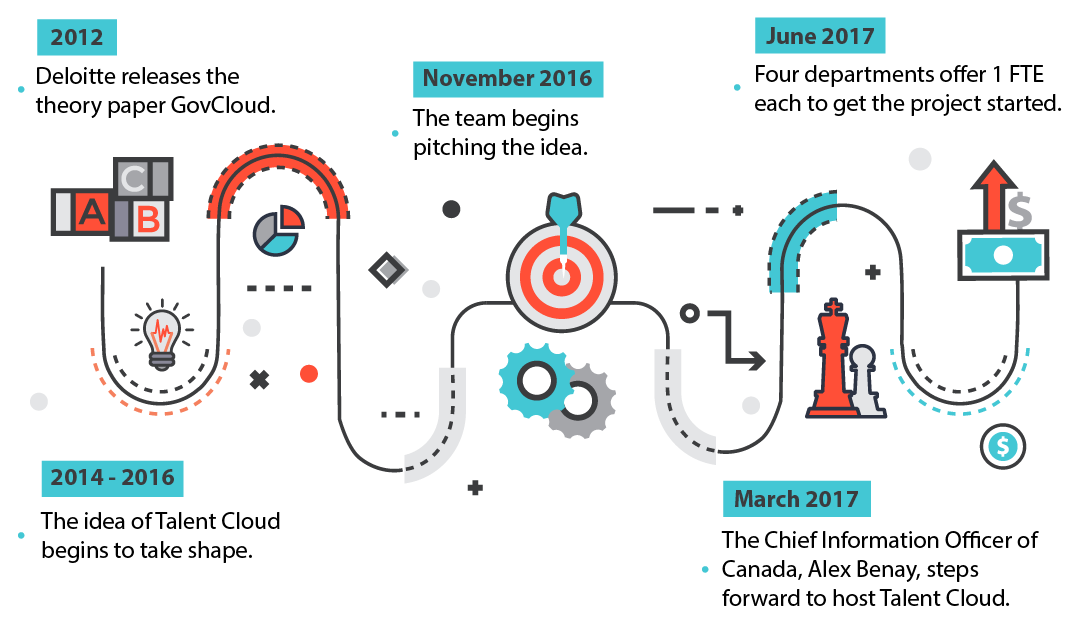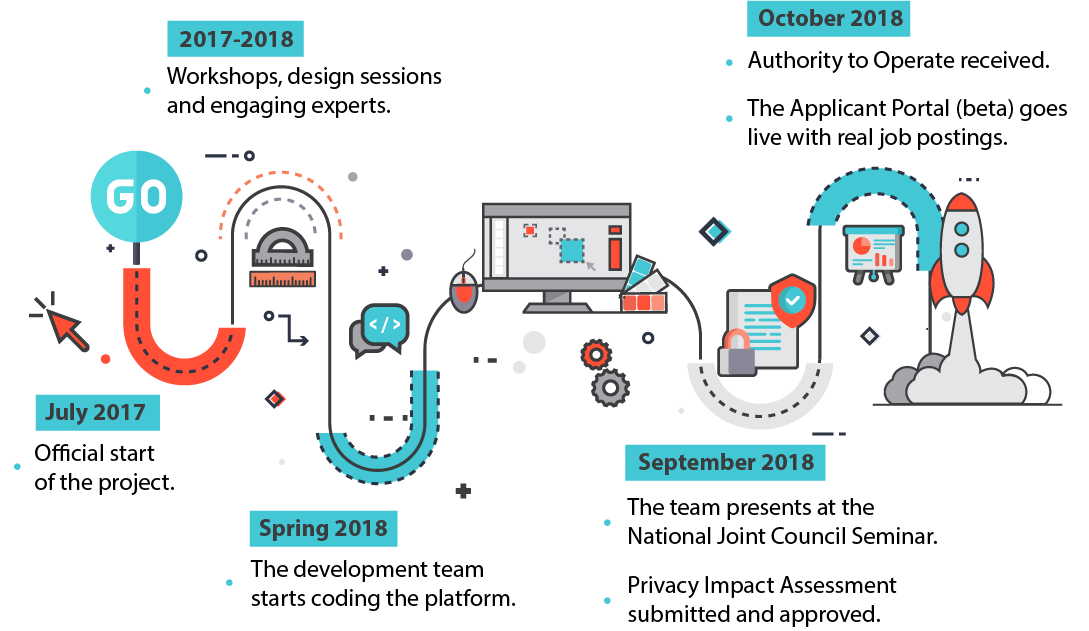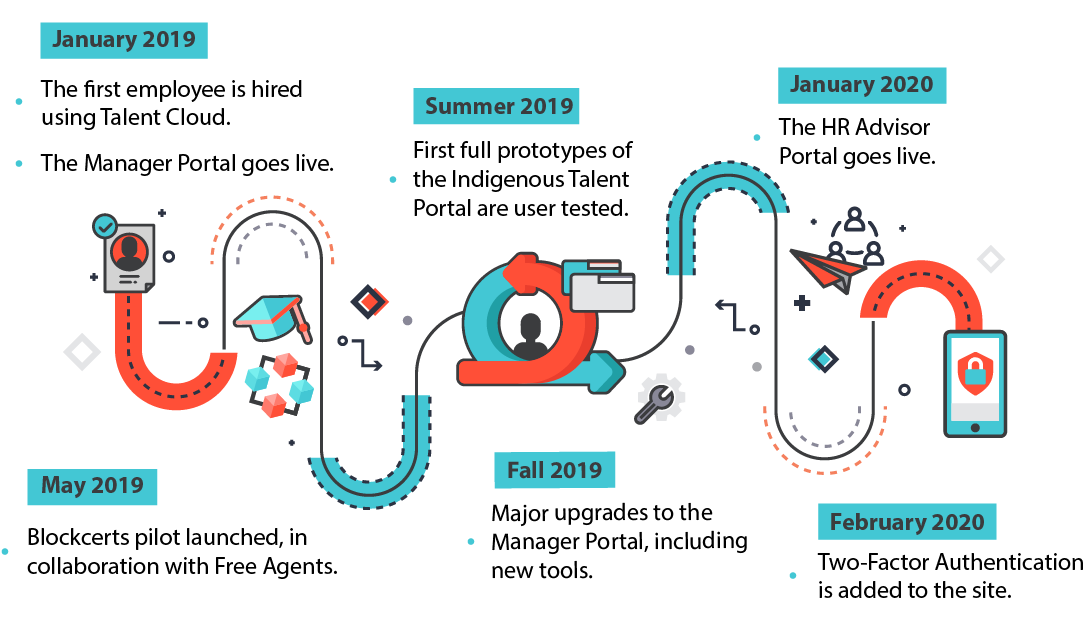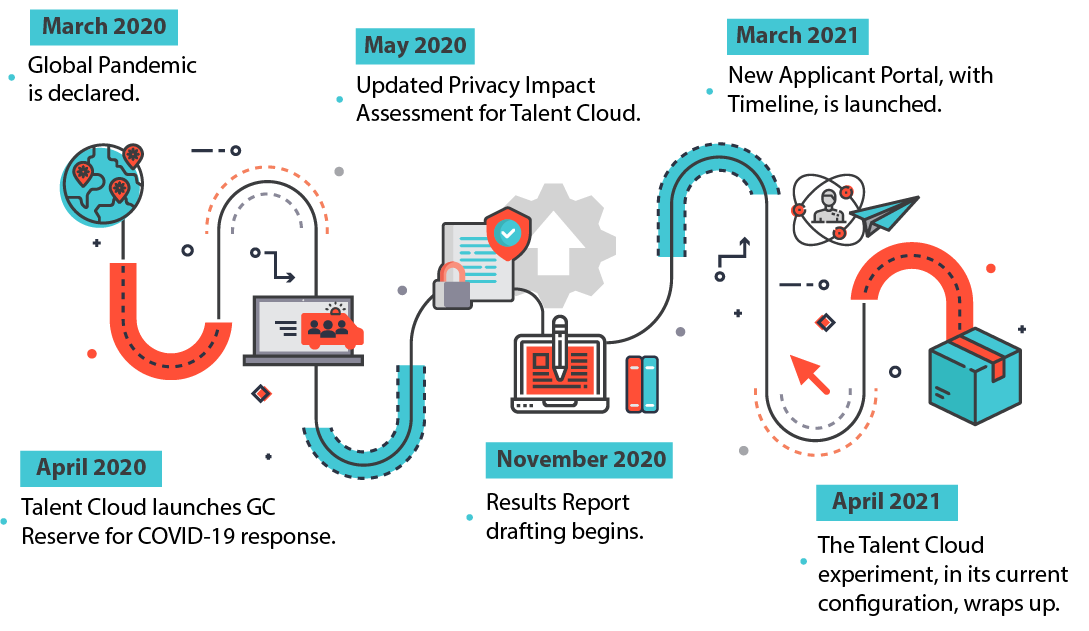
The initial team that started Talent Cloud previously worked together at the IN·spire Innovation Hub at Natural Resources Canada from 2014-2017, where we ran a number of experiments on talent mobility, including some of the earliest Government of Canada work on micro-missions and portable digital credentials (open badges).
The team also designed and launched the original Free Agents program, along with a fifth team member who became the first program manager. Free Agents grew into an initiative in its own right, but it was strategically designed as an early test of several of the concepts Talent Cloud was hoping to develop at a larger scale, including research on the psychological impact of project-based work on employees. As a commitment to do no harm, the Talent Cloud team wanted to make sure it wasn’t about to build something that would save time and generate efficiencies at the cost of employee mental health. Before we could figure out if Talent Cloud would work, we first had to consider whether or not it should be built at all. When the results from Free Agents were positive, the team that became Talent Cloud got to work raising money and pitching the new project to senior leaders.
Once the idea of Talent Cloud began to take on concrete parameters and performance objectives, the team decided to try to raise the resources for something unusual: a multi-year grassroots start-up inside government, aiming to build something experimental at the leading edge of theory on the future of work.

Talent Cloud initially launched as a project in July of 2017, but it took another 15 months before there was a minimal viable live platform. Initially, the team was only able to raise money for 4 FTEs - and only for terms. The team was so committed to the vision that all four initial members gave up their indeterminate status and moved into term positions in a new department. Then we began the process of researching what the platform should look like, and how to test points of intervention in service of the project’s three performance objectives.
New fiscal year, 2018-19, brought more funding and the chance to a UX designer and our Indigenous Community Liaison. We also hired three developers - a front end developer, an accessibility expert, and a back end developer. The platform launched six months later, in October 2018. Needless to say with our scarce staff compliment, our minimal viable product was very minimal. But it was enough to run real processes and start testing numerous interventions on job advertisement design and volume of applications.

After the platform went live in October 2018, the Talent Cloud team had a period of growth. More people were hired, including a behavioural scientist, an industrial psychologist, and more developers. The initial four team members were converted from term employees back to indeterminate status. New partner departments joined the venture. Jobs were live on the platform, and the time to staff was slowly but steadily ticking down, as we tested and refined our interventions. Hiring managers were finding unique talent (when they stuck with the process as designed), and applicants were sending us emails about how great their experience was, even when they weren’t the person who got the job.
But there were also challenges. Hiring managers and HR advisors weren’t always used to working with minimal viable products and experiments. No matter how we tried to frame this, government users were often disappointed that the platform wasn’t already fully developed. Partners wanted to fund the end product, not the development phase. We also wanted to accelerate the development timeline, but this is hard to do with only a handful of developers. Talent Cloud found it difficult to secure resources for an experimental project that cost more than a department could fund on its own, but less than a reasonable value for requesting a Memorandum to Cabinet. Basically, we needed medium size money from a stable source, and two years of experiment lead time, and that’s not something the Government of Canada innovation ecosystem is set up to easily provide.

Just as Talent Cloud was hitting its stride - with the new applicant timeline ready to launch, multiple hires emerging from single processes, and time to staff way down - COVID-19 hit. Almost as though someone had thrown a switch, Talent Cloud saw an almost total shutdown of recruitment for externally advertised term staffing on our platform. Experiments became a nice-to-have as the entire government shifted into response mode to meet critical needs. The significance of the historical moment wasn’t lost on the Talent Cloud team. In mid-March 2020, the Government of Canada sent its National Capital Region workers home for an unprecedented period of extended mass telework. The same day, Talent Cloud launched into repurposing its site to deliver an internal mobility platform, which went live three weeks later. The project was called GC Reserve and lasted 4 months (see the write-up in Section 5).
Talent Cloud faced funding issues in 2020-21, and the team was forced to shrink. In November, the team began writing up this report and preparing to transition out. Then, just as the report was almost complete, a handful of departments came forward asking to post term jobs on the site. So Talent Cloud rapidly dusted off the development work that was set aside during the pandemic, and launched a brand new application process, with an improved design to promote diversity in hiring outcomes and create a better screening experience for managers and HR advisors. While we won’t get much chance to gather a large sample size before our project funding runs out at the end of March 2021, we have four job advertisements running live on the platform using the new model. And we’re happy to report that, thus far, it’s doing what we’d hoped.